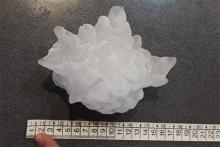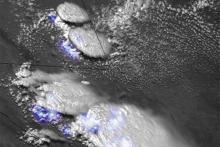Penn State's 2024 U.S. National Science Foundation-funded Climate Science Research Experiences for Undergraduates (REU) ended on a successful note, with 16 students presenting posters on their summer research projects.
A new approach for modeling hailstorms that uses more realistic hailstone shapes could improve our understanding of hazardous weather, according to a team led by scientists at Penn State.
With a combination of computational tools and insights from traditional meteorology and a three-year, $973,396 grant from the U.S. National Science Foundation (NSF), researchers are working to better understand and predict extreme weather events on both Earth and Mars.
Eli Vogel, now in the graduate program for environmental science and policy at Johns Hopkins, published results from research conducted with Ken Davis in the journal Carbon Management.





